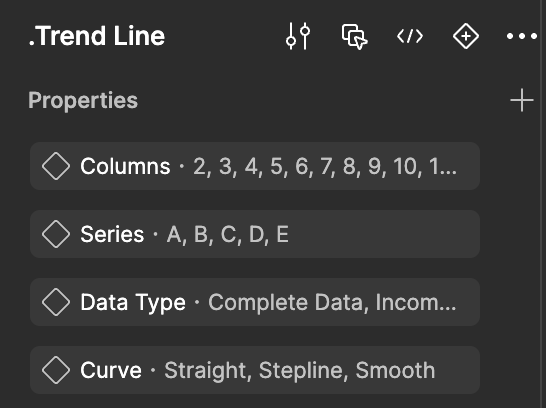TL;DR I want to know if anyone has explored using “Preferred Values” instance swapping as opposed to large Component Sets as a way to improve memory performance in both the Library and downstream project Figma Files.
I have a Library file with very complex components for charts in the UI. The components allow other designers to deeply configure a chart, and every aspect has nested variants for controls to be used in downstream project files.
Each chart has many nested instances for controlling aspects such as the axis labels, number of columns and rows, the marks, count of series to be presented, and the legend, and the state of the data.
A single nested instance could contain hundreds of variants, as many as 5 tiers deep. For example, a Trend Line instance can be configured with Variants for line style, which series it is, how many columns are in the data field, and the type of data.

This instance is set within a chart with other sibling instances, and higher tier interaction patterns beyond the base chart configuration.
These components are powerful design tools, but they consume huge amounts of file memory. I’ve seen conversations about boolean properties vs. variants for memory but no one has mentioned preferred values instance swapping as another method..
Would using preferred values for configuration options use less memory than having nested instances that are part of huge component sets? My thinking is that since “Each instance pulls all variants into the file memory for offline editing,” breaking a component set into smaller component sets and grouping them in a collection of “Preferred Values” might help the file perform better, at the sacrifice of some offline mode restrictions.
